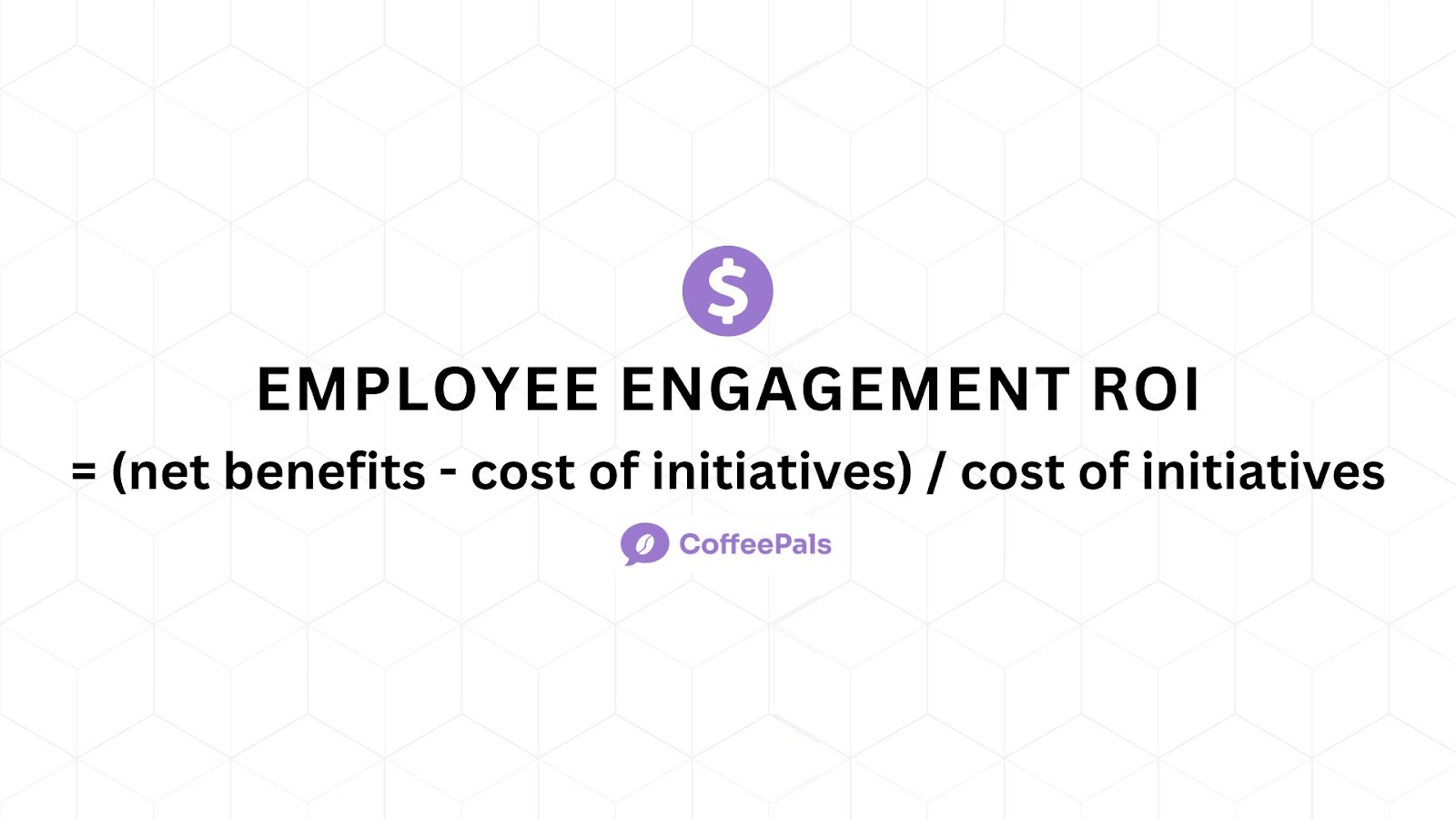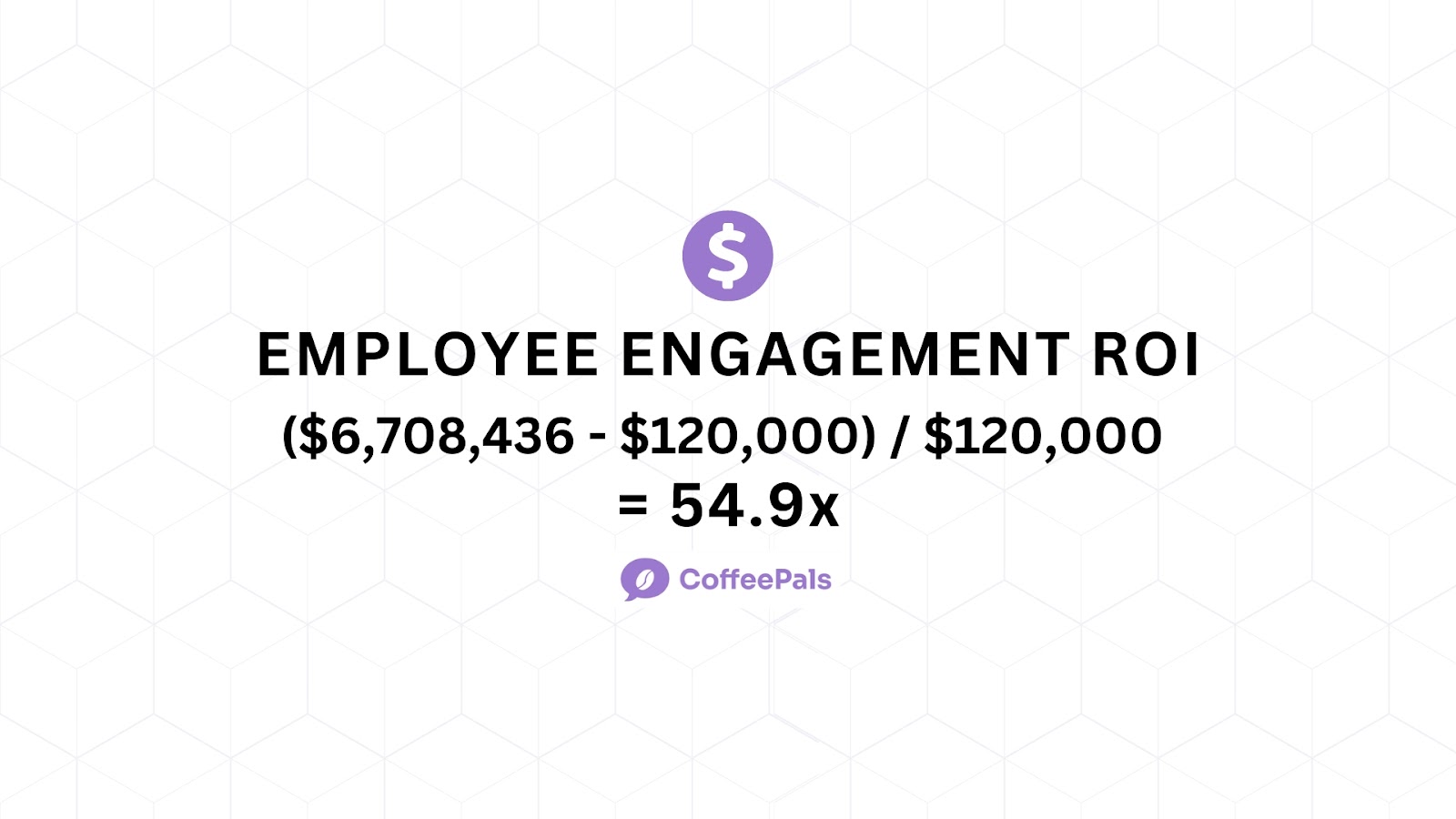Employee engagement has shifted from being a buzzword to a critical pillar in corporate success. It’s not at all surprising, knowing that organizations have seen amazing results from their employee engagement programs.
But for those who want more tangible proof that employee engagement programs actually work, it’s important to show success in numbers. Otherwise, it’s just another trend that lasted a bit longer than the others.
In this article, we’re going to show that employee engagement actually works — and yes, we’re showing it in numbers.
What’s Employee Engagement?
Employee engagement refers to employees' emotional and intellectual involvement in their work and organization.
It’s not just about employee satisfaction. It looks at a deeper connection where employees feel committed to their organization's goals and values. Engaged employees are enthusiastic about their work, feel a sense of purpose and pride in their contributions, and are more likely to go above and beyond their basic job responsibilities.
When employee engagement is high, you can expect increased productivity, higher employee retention, improved customer satisfaction, and better organizational performance. These can be observed through different metrics that we’ll discuss later in the article.
Organizations often implement various strategies, such as regular feedback sessions, professional development opportunities, and a positive workplace culture, to enhance and sustain employee engagement.
How to Measure Employee Engagement ROI
To compute the ROI on employee engagement, you’d need to calculate the net benefits first.
The net benefits are made up of three factors — the increase in employee productivity, the decrease in absenteeism, and the reduction of turnover. Just add the amount earned from the increase in productivity to the amount saved from the decrease in absenteeism and turnover.

Let’s say you earned an additional revenue of $6,310,000 because of the increase in productivity. You also saved $194,457 from the decrease in absenteeism and $203,980 from the decrease in turnover.

This means that your total net benefit is $6,708,436.
Once you have the total net benefits, you can start computing for your employee engagement ROI. Simply subtract the cost of your employee engagement initiatives from the net benefits, and you’ll have the answer.

Let’s say you spent $120,000 on employee engagement initiatives. Subtract that from your net benefit of $6,708,436, then divide it by the amount spent to get your ROI.

Why Do These Metrics Matter?
Employee engagement impacts so many facets of any organization that its returns can be measured in so many ways. Here are other metrics that you can use to see how effective your employee engagement initiatives are.
Productivity
Productivity is one of the best ways to measure employee engagement. The more engaged employees are, the more motivated they are to perform at their best.
Studies show that teams with high engagement are 21% more productive than those with low engagement. This makes total sense, knowing that engaged employees are 48% less stressed than disengaged employees.
How do you know that your employees are more productive?
Total sales is one indicator of productivity. Did you know organizations with high engagement are 23% more profitable than their counterparts? This is proof that engagement impacts sales.
Performance reviews also clearly show the relationship between productivity and engagement. Check for any shifts in performance and compare it with engagement levels.
Turnover Rate
Turnover or attrition rates show the frequency employees leave a company and are replaced within a specific period. This could either be voluntary or involuntary.
The more engaged employees are, the longer they stay with the company. It’s not just about the salary. In fact, 83% of millennials (who make up a huge percentage of the workforce) are willing to take a pay cut to move to a more engaging workplace.
To get the turnover rate, just divide the number of employee separations by the average number of employees. Multiply the number by 100 to get the percentage.
Absenteeism
Organizations with high employee engagement also see 41% lower absenteeism. Who would want to miss work when they enjoy their workplace?
Note that many organizations with high employee engagement are also more generous when it comes to time off. They usually have more flexible policies when it comes to vacation leaves, sick leaves, and personal time off. Employees appreciate knowing they’re given the time to rest, recover, and destress.
Aside from having lower stress levels, engaged employees are also 53% less likely to get sick. Their happier disposition also makes it easier for them to get along with the people at work and with the others they deal with outside the workplace, like family and friends. This means there are fewer chances of any external conflicts that could make them miss work.
Customer Satisfaction
When employees are happy, they create a ripple effect that translates into their quality of work. This means customers end up with products and services that meet and exceed their expectations.
Even when faced with customer complaints, highly engaged employees can better handle these cases more efficiently. This means that they can give customers a memorable experience despite any unfortunate mishap along the way.
Finding the Right Tools for Employee Engagement
When it comes to employee engagement, the tools you use can impact your chances of success. This isn’t something you implement for the sake of having an initiative in place. You need to be more intentional to enjoy the benefits, whether in the form of higher profits, better performance, or lower turnover.
If you’re at a loss on where to get started, we suggest you start with a virtual coffee chat platform like CoffeePals.
Virtual coffee chats are a modern version of the water cooler chats in the workplace. It provides a casual space where team members can take a break from work and just chat. These quick breaks can help:
- Foster personal connections among team members through informal social interactions
- Enhance team collaboration by providing more opportunities to communicate
- Supporting well-being by providing a safe space where colleagues can check on each other and address feelings of isolation
CoffeePals also has a Coffee Maker feature where team members can answer thought-provoking questions on their team channels. These great icebreakers happen at least twice a week, allowing everyone to observe each team member’s different perspectives.
Try out CoffeePals now and start seeing an increase in team engagement. Reach out to our team to find out how you can maximize the tool for your unique needs.
















